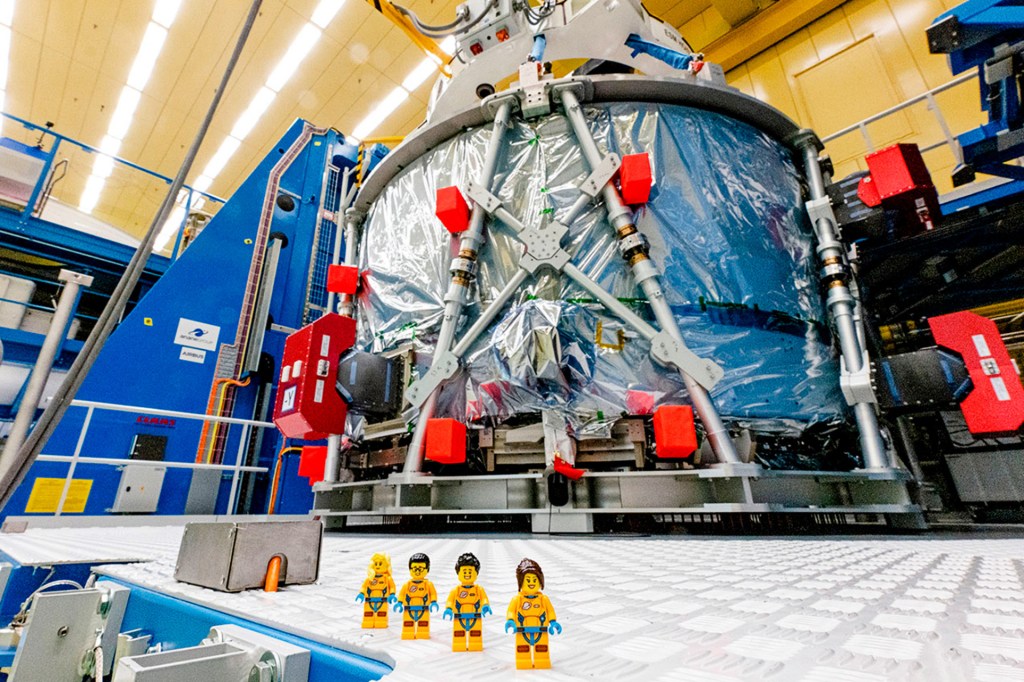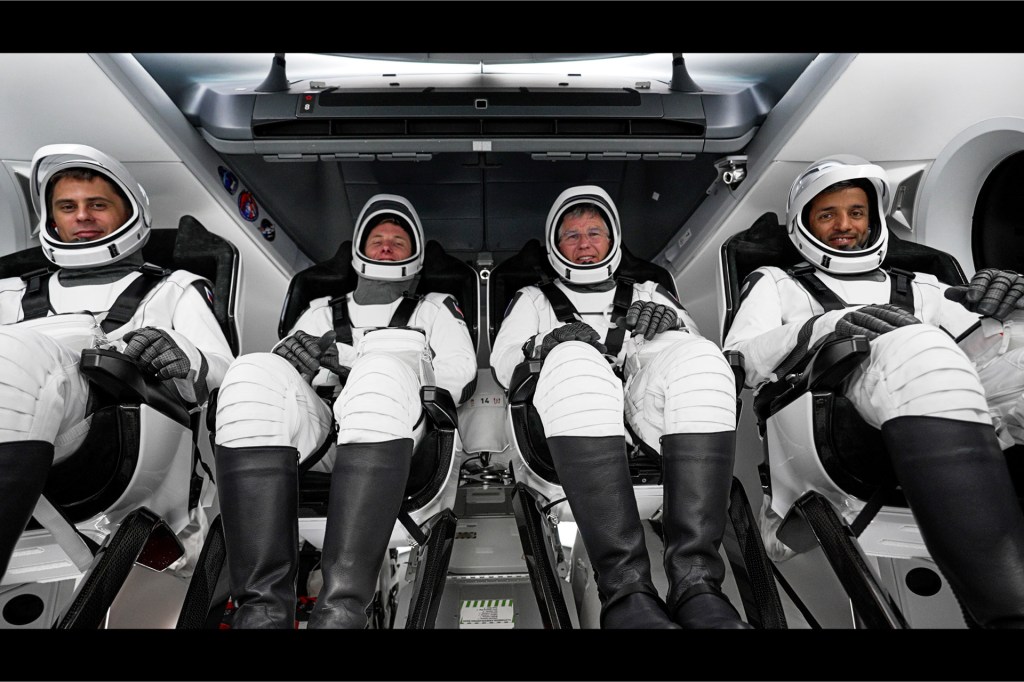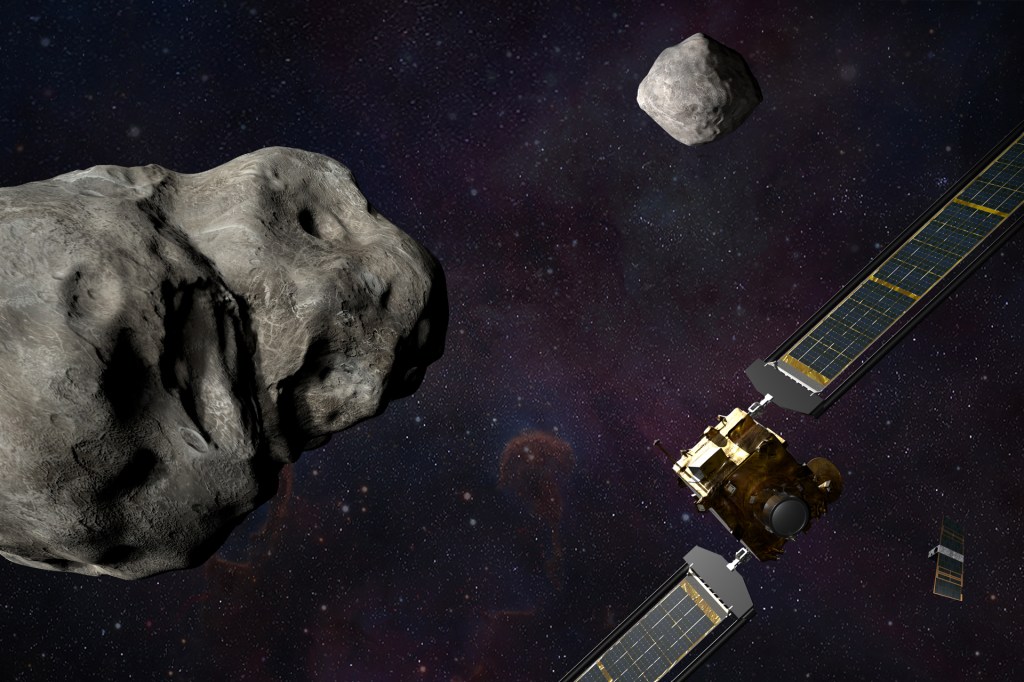
Mission managers at NASA spent $330 million to send a refrigerator-size craft 7 million miles into space and punch an asteroid in the nose. We should all be very glad they did, because Earth now feels a little bit safer.
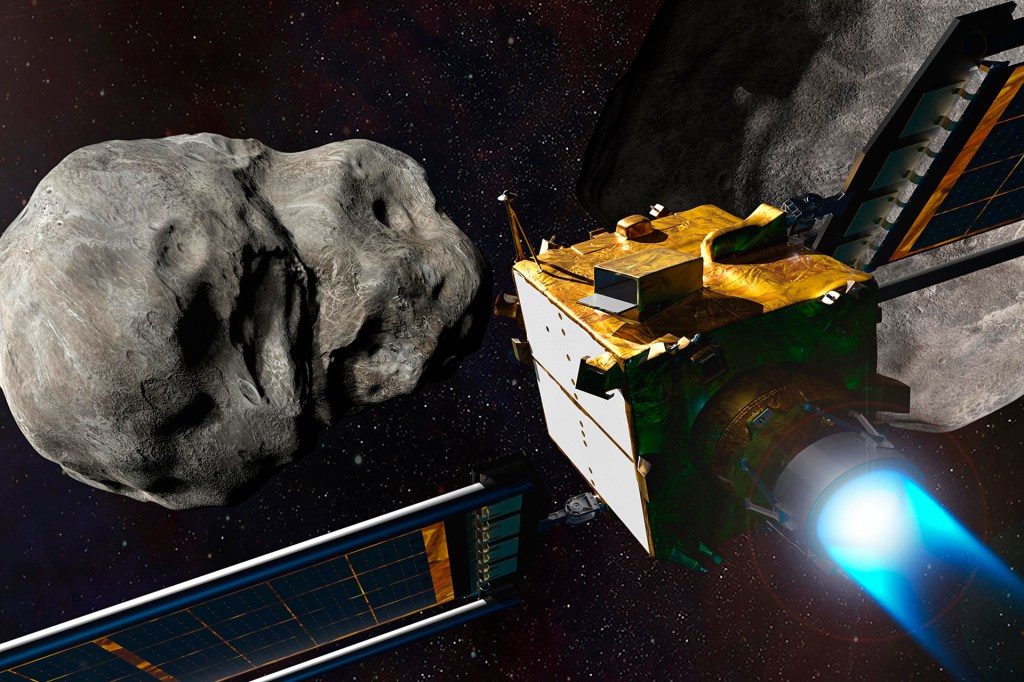
TEST RUN This illustration shows NASA’s Double Asteroid Redirection Test spacecraft (DART) before it hit Dimorphos (left).
STEVE GRIBBEN—JOHNS HOPKINS APL/NASAThe spacecraft is known as DART. That stands for Double Asteroid Redirection Test. It was launched last November. Its job was to fly out to the asteroid Dimorphos and crash into it. The purpose of the cosmic collision? To see if DART’s impact could speed up the asteroid’s orbit
orbit
 EGAL—GETTY IMAGES
the path that one thing takes around another
(noun)
Earth moves in an orbit around the sun.
around another space rock, Didymos. Neither Dimorphos nor Didymos poses any danger to Earth. But in the future, other asteroids might (see “Space Rocks”). The DART impact tested a technology that could one day be needed to protect our planet.
EGAL—GETTY IMAGES
the path that one thing takes around another
(noun)
Earth moves in an orbit around the sun.
around another space rock, Didymos. Neither Dimorphos nor Didymos poses any danger to Earth. But in the future, other asteroids might (see “Space Rocks”). The DART impact tested a technology that could one day be needed to protect our planet.
The collision took place on September 26. For the mission to be a success, NASA calculated that DART would have to change Dimorphos’s orbit by at least 73 seconds. On October 11, at the Kennedy Space Center, in Florida, the DART team announced its results: The collision sped up Dimorphos’s orbit by 32 minutes.
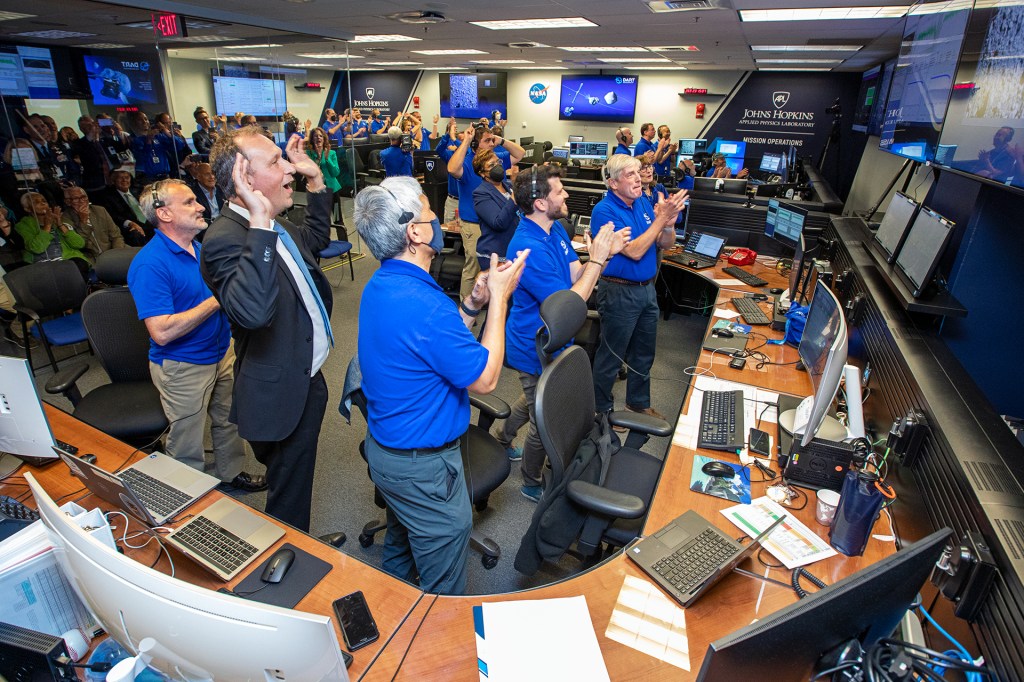
SUCCESS! The DART command team cheers as the spacecraft hits its target on September 26.
DAVE C. BOWMAN—NASA“This mission shows that NASA is trying to be ready for whatever the universe throws at us,” administrator Bill Nelson said.
Eyes on the Sky
Ever since the collision, six Earth-based telescopes have kept watch on Dimorphos. The Hubble Space Telescope is also keeping an eye on the Didymos-Dimorphos system. It’s capturing images not just of the asteroids but of the huge ejecta, or trail of rock and dust, that DART’s impact blasted into space.

ON CAMERA A monitor at Kennedy Space Center shows images from DART before the craft smashes into Dimorphos.
JIM WATSON—AFP/GETTY IMAGESIt’s too soon to know exactly what the DART results mean for the future of planetary defense. But it has now been proven that it’s possible to change the velocity
velocity
 ROBERT LOWDON—GETTY IMAGES
in physics, the speed and direction of something
(noun)
The car moved at a high velocity.
of an asteroid, and that’s a good start. Nancy Chabot is on the DART team at a Johns Hopkins University laboratory in Laurel, Maryland. The point of programs like DART, she says, would be to give an asteroid “that little nudge” that’s needed to keep it and Earth from colliding.
ROBERT LOWDON—GETTY IMAGES
in physics, the speed and direction of something
(noun)
The car moved at a high velocity.
of an asteroid, and that’s a good start. Nancy Chabot is on the DART team at a Johns Hopkins University laboratory in Laurel, Maryland. The point of programs like DART, she says, would be to give an asteroid “that little nudge” that’s needed to keep it and Earth from colliding.

UNVEILING The DART spacecraft is unwrapped in California in October 2021.
AARON TAUBM—USSF 30TH SPACE WING/NASAProtecting the Planet
Protecting the planet from asteroids is about finding them before they come close to Earth. That way, there’s time for a spacecraft to redirect them. But depending on the type of asteroid, something like DART could do more harm than good. Some asteroids are solid rock. Others are more like rubble piles. Hit one of those with a spacecraft like DART, and you could make a bad problem worse.
“Breaking an asteroid is not really the best way to defend yourself from it,” NASA program scientist Tom Statler says. Because instead of one large object, “you have a lot of little objects heading for you. And that’s not better.”
An asteroid like that would require a different kind of system from DART. But NASA has no plans yet to develop one.
For the moment, though, the space agency can celebrate DART’s success. “All of us have a responsibility to protect our home planet,” Nelson says. “After all, it’s the only one we have.”
Space Rocks
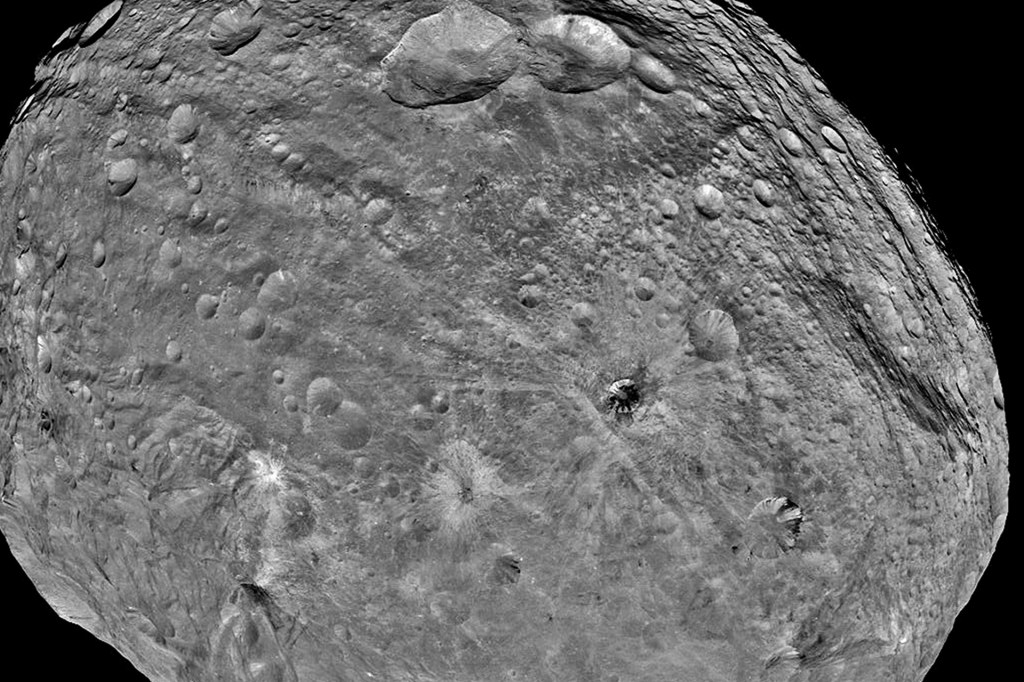
An asteroid is a rocky object that orbits the sun. Some asteroids are less than 33 feet in diameter. Others are much bigger. One of the largest asteroids is Vesta (pictured). It’s about 329 miles across. According to NASA, our solar system contains more than a million known asteroids. None of these space rocks currently threatens Earth. But if one does, DART could help.
Dimorphos, the asteroid DART crashed into, is about 525 feet across. —By Jaime Joyce




